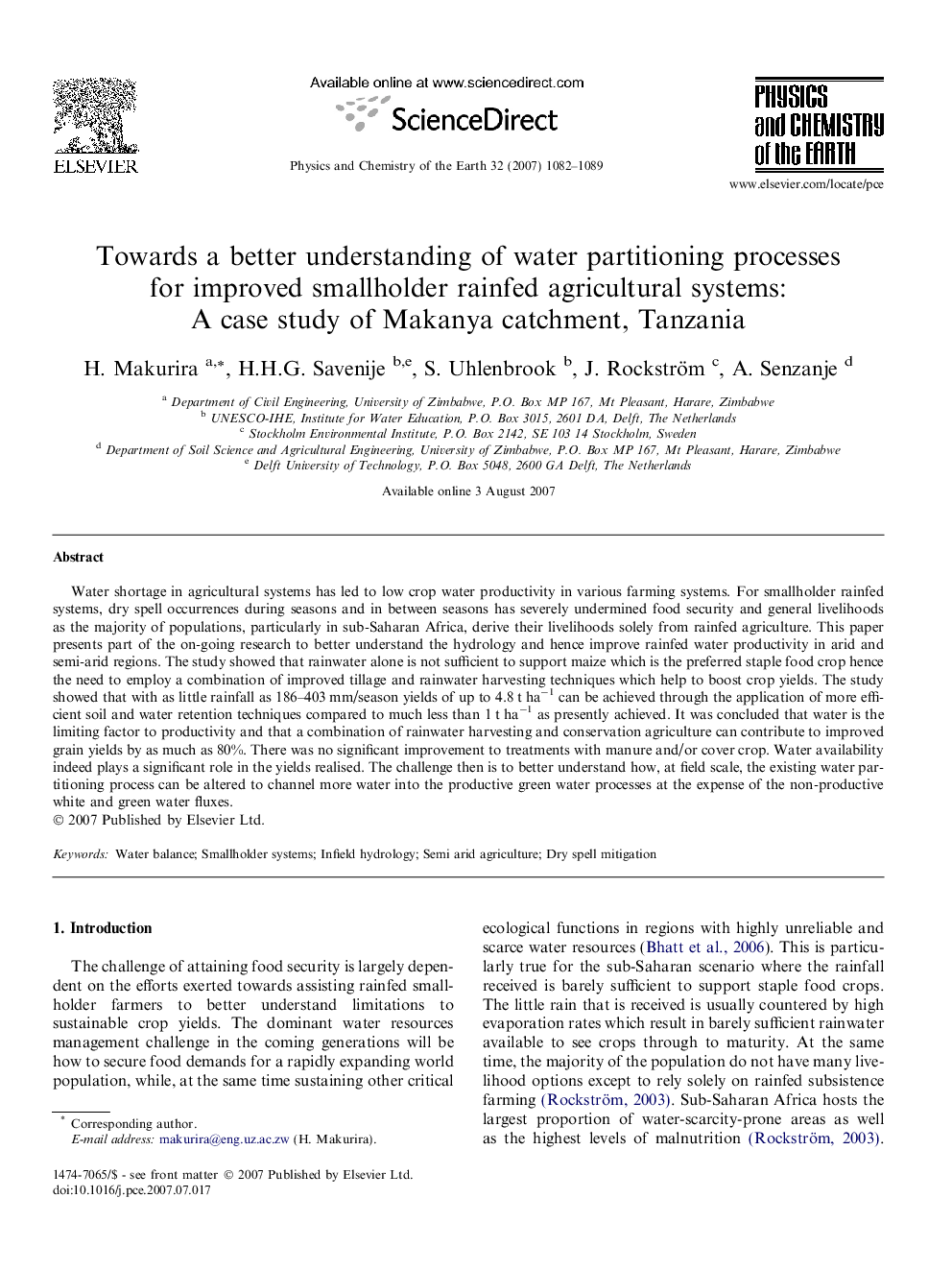| Article ID | Journal | Published Year | Pages | File Type |
|---|---|---|---|---|
| 4721810 | Physics and Chemistry of the Earth, Parts A/B/C | 2007 | 8 Pages |
Water shortage in agricultural systems has led to low crop water productivity in various farming systems. For smallholder rainfed systems, dry spell occurrences during seasons and in between seasons has severely undermined food security and general livelihoods as the majority of populations, particularly in sub-Saharan Africa, derive their livelihoods solely from rainfed agriculture. This paper presents part of the on-going research to better understand the hydrology and hence improve rainfed water productivity in arid and semi-arid regions. The study showed that rainwater alone is not sufficient to support maize which is the preferred staple food crop hence the need to employ a combination of improved tillage and rainwater harvesting techniques which help to boost crop yields. The study showed that with as little rainfall as 186–403 mm/season yields of up to 4.8 t ha−1 can be achieved through the application of more efficient soil and water retention techniques compared to much less than 1 t ha−1 as presently achieved. It was concluded that water is the limiting factor to productivity and that a combination of rainwater harvesting and conservation agriculture can contribute to improved grain yields by as much as 80%. There was no significant improvement to treatments with manure and/or cover crop. Water availability indeed plays a significant role in the yields realised. The challenge then is to better understand how, at field scale, the existing water partitioning process can be altered to channel more water into the productive green water processes at the expense of the non-productive white and green water fluxes.
